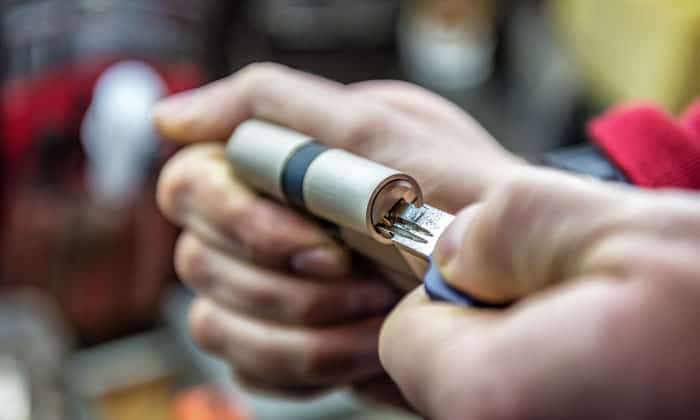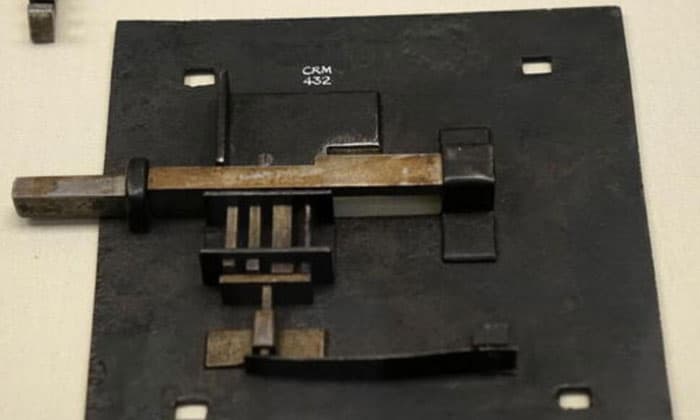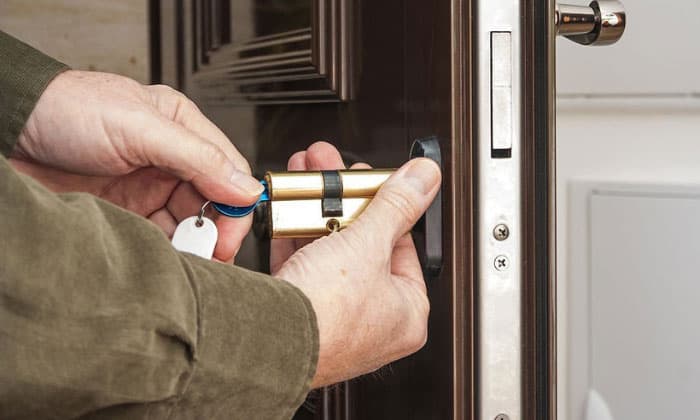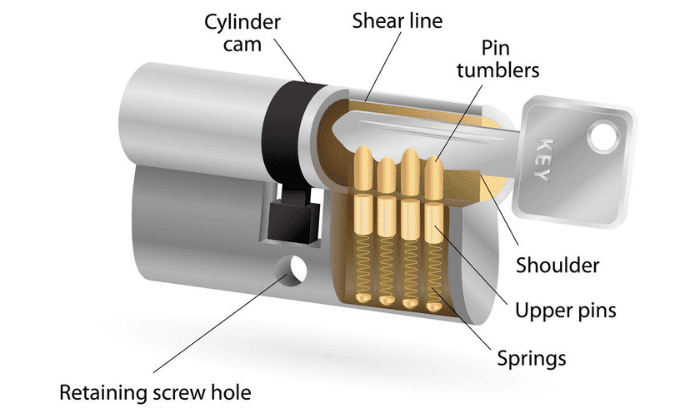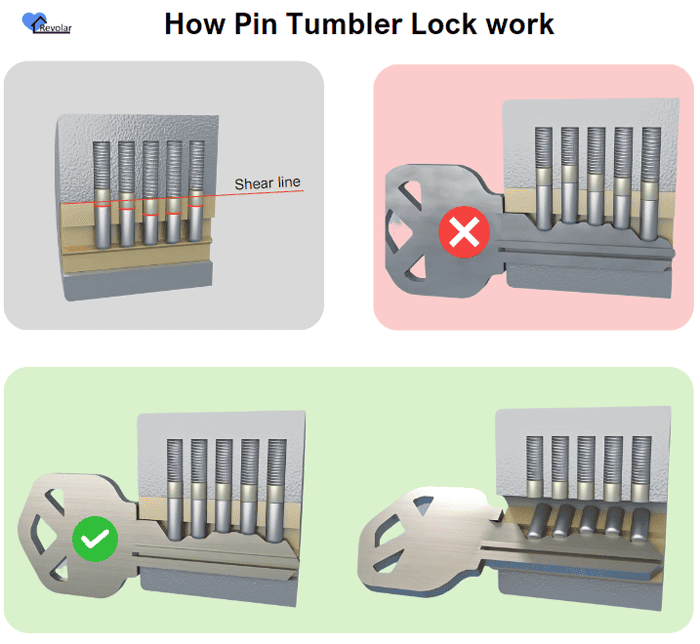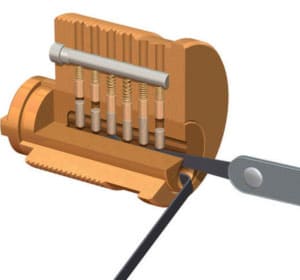There is a wide variety of locks nowadays, ranging from traditional options such as padlocks to more advanced ones such as keyless entry smart locks. However, there’s one that stood the test of time and is still widely used for both commercial and residential purposes – pin tumbler locks.
If you use a key to open a lock, chances are that the lock has a pin-tumbler mechanism inside. In fact, it’s estimated that 90% of all the locks in the world are pin tumblers.
What makes this type of locking mechanism so popular? How does it work? Are they secured or easy to bypass? We’ll answer all of your questions in this article. Stay tuned!
Table of Contents
What Are Pin Tumbler Locks?
A pin-tumbler lock is a type of locking mechanism that utilizes pins of varying lengths that require the right key to open. They are commonly used in locks, mailboxes, safes, house doors, and car doors.
They can be distinguished from other locking mechanisms by a tight keyway with pins commonly found above it.
There are two variations of pin-tumbler locks.
- The in-line pin tumbler has pins arranged in a line and can be opened with a flat key.
- Radial pin tumbler has pins arranged in a radial format and can be opened with a round key.
History of Pin Tumbler Locks
The oldest pin-tumbler lock can be traced back as early as 721 – 705 BC; it was uncovered by archeologists in the Palace of Khorsabad, Iraq, which is now in ruins.
Egyptian locks are considered the first variant of a pin-tumbler lock. Found in 2000 BC, the lock comprised a wooden post that houses the pins and a horizontal bolt as the keyway.
Today’s modern version of pin tumbler locks can be attributed to Linus Yale Sr. in 1848. It has pins that vary in length and a smaller key with serrated edges for every pin inside the lock.
Benefits of Pin Tumbler Locks
A pin and tumbler lock will bring the following advantages:
- Cost-effective: Pin-tumbler locks are more affordable compared to keyless locks but they can reliably do the job.
- Safe: Due to the complexity of the inner working mechanisms of a pin tumbler lock, it cannot be easily bypassed.
- Resistant to severe weather conditions: Since pin-tumbler locks are made of sturdy materials, they do not ice up when the weather is freezing or expand when it is hot.
- Convenient: Pin-tumbler locks are easy to lock and unlock with just a key. Just a simple turn is required.
- Can be rekeyed: If you worry that someone might have the key for your pin-tumbler lock, you can rekey your lock so that the original key for it won’t work anymore.
How Do Pin Tumbler Locks Work?
Before diving into the actual process of how pin tumbler locks work, it’s better to understand the anatomy of a pin tumbler lock first.
1. Components of Pin-Tumbler Locks
Here are the parts of a tumbler lock according to the lock diagram:
1. Plug
The plug contains the keyway where the key is inserted. It has pin chambers where pins can slide to prevent the plug from rotating when the wrong key is inserted.
2. Cylinder
The cylinder is responsible for housing all the components of a pin tumbler lock. This part is fixed onto a door handle, door knob, or padlock, which should not move.
3. Driver pins
The driver pins are one of the components of a lock tumbler kit that stops a wrong key from opening the lock. This is because they sit between the shear line, which prevents the plug from turning completely.
4. Key pins
Lock tumbler pins or key pins have contact with the key when a key is inserted. They move when the biting of the key hits them, which causes the driver’s pins to move.
5. Shear line
This is a space between the plug and the cylinder. If the shear line doesn’t have obstructing pins, the plug can rotate freely. If the shear line has obstructing pins, the plug cannot rotate.
6. Warding
The warding is the exterior and the interior part of the keyway. It provides just enough space for the key to go through, which prevents bigger keys and picks from accessing the keyway.
7. Spring
The springs are responsible for pushing the pins onto the shear line so that it obstructs the rotation of the plug. The spring contracts when a key is inserted, and the spring relaxes when a key leaves the cylinder.
8. Key
The key for a pin-tumbler lock or key tumbler has bitings or serrated edges. These edges will accurately push the pins inside the keyway so that it won’t obstruct the shear line.
9. Pin chambers
Pin chambers are basically housing for the pins to be pushed and pulled without moving elsewhere.
2. So How Does It Work?
When a key is inserted into the keyway, the security pins in locks are pushed by the serrated edges of the key. If the correct key is inserted, the pins are aligned and no more pins obstruct the shear line. The key can now be turned to rotate the plug and open the lock.
If an incorrect key is inserted, the pins will not align, and some, if not all, pins will obstruct the shear line of the lock. This prevents the plug from rotating, meaning the lock won’t be opened.
When the key is pulled away from the lock, the springs will push the pins back and lock the mechanism.
Common Pin Tumbler Lock Vulnerabilities
Like all locks, pin-tumbler locks have weak points that can be exploited. Here are some of the vulnerabilities and what you can do to alleviate them:
1. Lock Snapping
Lock snapping is a kind of forced entry that breaks the lock using pliers or similar reinforced tools that offer a high amount of force. Cheap and unreliable pin tumbler locks are the most vulnerable to snapping by brute force. Once broken, a replacement lock is needed.
To protect against lock snapping, invest in disk padlocks where the shackles are protected, which prevents the pliers from gaining space. Heavy-duty or reinforced locks can offer some resistance to extreme forces.
2. Lock Picking
To open a pin tumbler lock without a key, some resort to lock picking. Lock-picking requires using simple tools such as hooks and picks and basic knowledge to execute.
To avoid having your pin tumbler locks picked, you can opt to purchase pin tumbler locks that are pick-resistant. If you have an extra budget, you can also put up security features such as cameras for your home or business.
3. Lock Bumping
Lock bumping is when a universal bypass tool is inserted into the keyway of the lock, and a strong force is applied by bumping the tool. This disengages the pins inside the lock and pry it open.
To make your pin tumbler locks bump-resistant, anti-snap cylinders are available but more expensive than common pin tumbler locks.
Conclusion
Whatever your locking mechanism is, it’s important to understand them as they protect your family and secure your valuables and business. You should also know the vulnerabilities of your lock so you can properly secure them.
Knowing how pin tumbler locks work helps you maintain the lock to extend its lifespan. It can also save you money by doing fixes and maintenance by yourself rather than hiring a locksmith to do it for you.

I am the last member to join Revolar and might be just the luckiest to work with dedicated people like Teddy and John. Our team has established a process where my only job is writing the best content to deliver incredible ideas and guides.



